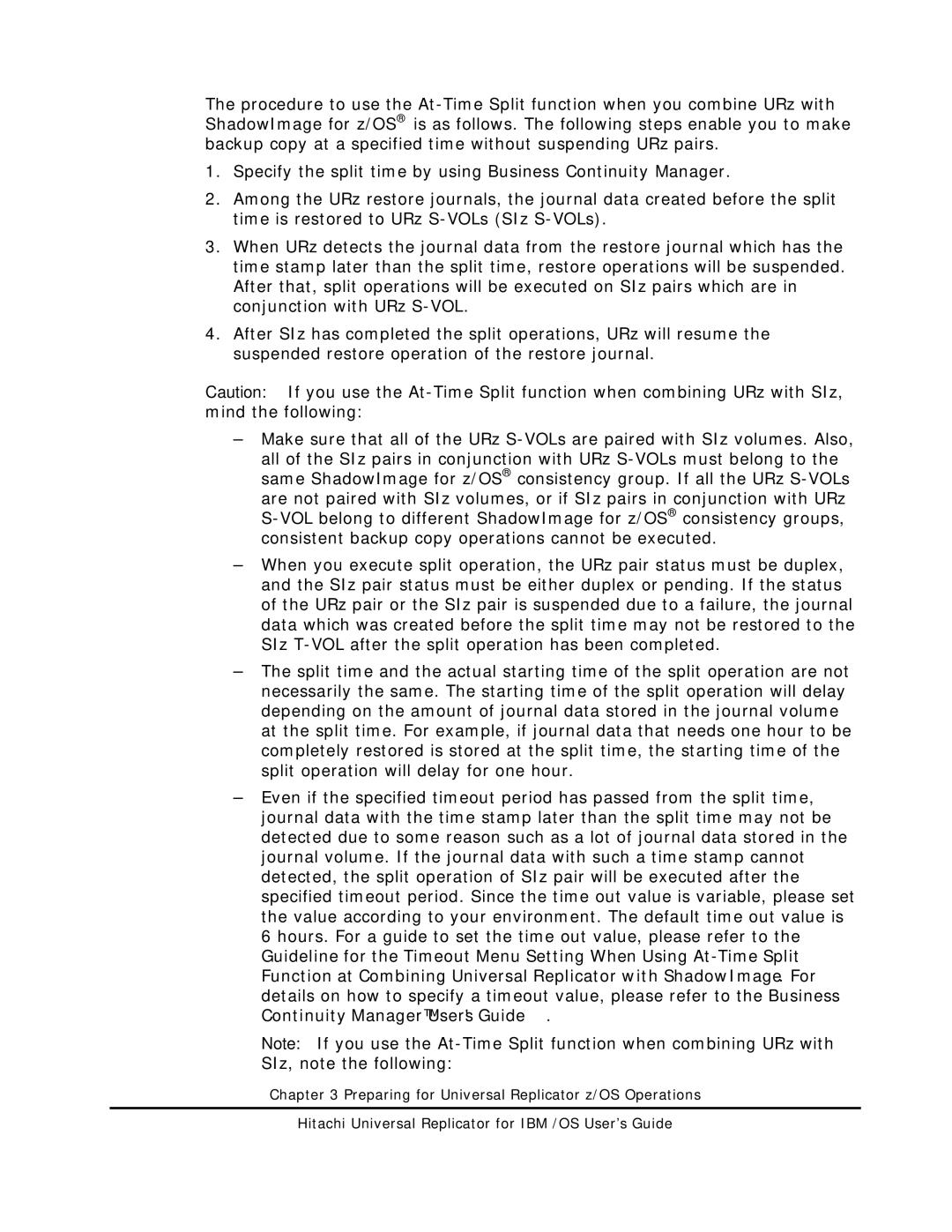The procedure to use the
1.Specify the split time by using Business Continuity Manager.
2.Among the URz restore journals, the journal data created before the split time is restored to URz
3.When URz detects the journal data from the restore journal which has the time stamp later than the split time, restore operations will be suspended. After that, split operations will be executed on SIz pairs which are in conjunction with URz
4.After SIz has completed the split operations, URz will resume the suspended restore operation of the restore journal.
Caution: If you use the
–Make sure that all of the URz
all of the SIz pairs in conjunction with URz
are not paired with SIz volumes, or if SIz pairs in conjunction with URz
–When you execute split operation, the URz pair status must be duplex, and the SIz pair status must be either duplex or pending. If the status of the URz pair or the SIz pair is suspended due to a failure, the journal data which was created before the split time may not be restored to the SIz
–The split time and the actual starting time of the split operation are not necessarily the same. The starting time of the split operation will delay depending on the amount of journal data stored in the journal volume at the split time. For example, if journal data that needs one hour to be completely restored is stored at the split time, the starting time of the split operation will delay for one hour.
–Even if the specified timeout period has passed from the split time, journal data with the time stamp later than the split time may not be detected due to some reason such as a lot of journal data stored in the journal volume. If the journal data with such a time stamp cannot detected, the split operation of SIz pair will be executed after the specified timeout period. Since the time out value is variable, please set the value according to your environment. The default time out value is 6 hours. For a guide to set the time out value, please refer to the Guideline for the Timeout Menu Setting When Using
Note: If you use the
Chapter 3 Preparing for Universal Replicator z/OS Operations |
